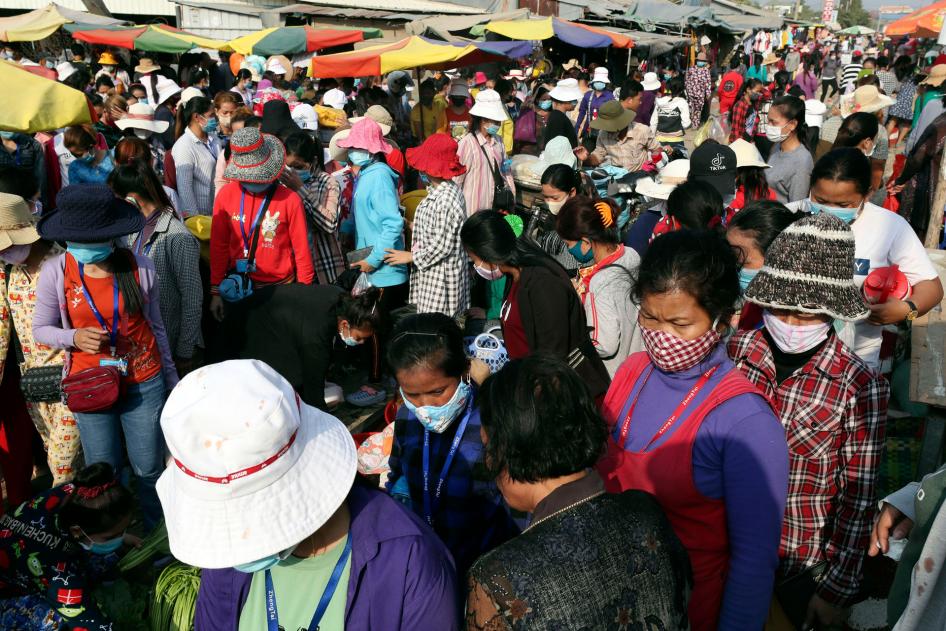On 24th April 2013, more than 3,000 garment workers in Bangladesh were ordered to go to work in a commercial building that, the day before, had been evacuated due to the discovery of dangerous, structural cracks. During the morning rush hour, the 8-story building collapsed. 1,134 people were killed; thousands more sustained severe, life-altering injuries.
The Rana Plaza disaster was, regrettably, not the first nor last industrial disaster of this kind, but the human toll was too immense for the international media to ignore. The world watched as rescuers searched through the rubble for survivors. The labels of the garments also found in the rubble revealed that these workers were forced to go to work that day to make clothes for popular, Western brands.

Credit: Institute for Global Labour and Human Rights Flickr via flickr 
Credit: ricans via flickr
In the wake of the Rana Plaza disaster, many brands sidestepped accusations of negligence and labour rights abuses. The brands did not own the factories. Some did not even know that their clothes were being made there until weeks after. The tragedy exposed the major lack of transparency in the complex, global supply chains that allows major brands to thrive but has detrimental consequences for the poorest and most vulnerable. Simply put by Fashion Revolution in their 2020 Fashion Transparency Index, “if we don’t know where and by whom our clothes are being made, then it is difficult for relevant stakeholders to work together to fix problems before they end in tragedy.”
The same lack of transparency and accountability in the fashion industry that resulted in thousands of deaths in 2013 has also allowed modern slavery to infiltrate fashion supply chains. The Global Slavery Index 2018 identified fashion as the second largest product at risk of modern slavery. Annually, G20 countries, who account for 80% of the world’s trade, import US$127.7 billion worth of garments at risk of modern slavery, mostly from emerging countries.
“The hidden and forgotten dwell in the shadows of our clothes”
Cary Somers, Fashion Revolution
At the bottom of the fragmented supply chains, where the workforce is more vulnerable to exploitation and almost invisible to the company and the consumer, modern slavery is often buried. Many forms – forced labour, bonded labour, child labour, and human trafficking – can be found at every stage of the global fashion supply chain, from the cotton fields in Central Asia, to the spinning mills in China, to the factories in South East Asia.
When every stage of its global supply chain – the sourcing of each material and the manufacturing process – has been divided up, outsourced and subcontracted around the world, a fashion brand in the UK cannot, nor is required to, guarantee that its clothes are slave-free. The supply chains are so opaque that, according to the Ethical Trading Initiative, 71% of brands believe that there is probably modern slavery occurring at some stage in their supply chains.
Seven years on from Rana Plaza, as another crisis, the COVID-19 pandemic, has paralysed the global garment industry, it is clear that the structural inequalities of the industry still exist. These obscure supply chains still enable brands to accrue vast profits by selling cheap clothes at the expense of the workers at the bottom of the chain, whilst also being exempt from responsibility for those workers.
According to the Bangladesh Garment Manufacturers and Exporters Association, as of 22nd April, some of the world’s most profitable brands have cancelled the orders of 980 million ready-made garments that are worth US$3.17 billion. These multi-million dollar brands have withheld payments owed to factories for completed orders, meaning that these factories cannot pay their workers. In just Bangladesh, 2.27 million workers have been affected. Taking paycuts from their already extremely low wages or losing their jobs entirely, garment workers all over the world – Bangladesh, Cambodia, India, Myanmar, Sri Lanka, Egypt, Pakistan – are facing poverty, displacement and desperation; these are all major vulnerabilities to modern slavery.

A woman sits near sewing machines as workers occupy a closed garment factory in Myanmar to demand their salariCes. Credit: Lynn Bo Bo/EPA via Guardian 
Garment factory workers wear face masks as they walk out at the end of their work shift March 20, 2020, near Phnom Penh, Cambodia.
Credit: AP Photo/Heng Sinith via Human Rights Watch
The tragedy of Rana Plaza was a catalyst in the labour rights movement. Over 200 brands signed the ‘Bangladesh Accord,’ which made them accountable for ensuring that garment factories are a safe work environment. This was good progress, but there is still much to be done to improve the welfare of the workforce, and we have been reminded of that grim reality in recent weeks.
When millions are endangered and exploited, it is essential that brands untangle the long supply chains they have created. Once brands are more transparent and assume more accountability, significant steps can finally be taken to protect the vulnerable from abuse and exploitation. Brands must put people over profit.
What can you do?
6 ways you can fight modern slavery from home.
Want to find out more?
WATCH: ‘The True Cost’
READ: ‘Slave to Fashion’ – Safia Minney
LISTEN: ‘Ethical Fashion? How COVID-19 is impacting garment workers’ – Wardrobe Crisis Podcast
